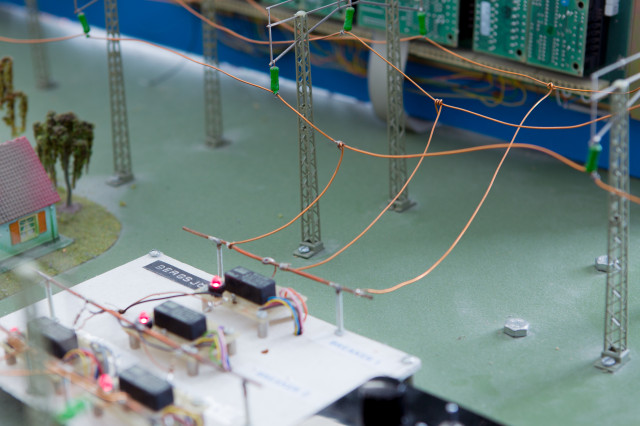Asynchronous, Synchronous and DC machines. Salient poles, harmonics and space harmonics. Models for electrical machines under steady state and transient conditions. Vector representation of AC machines. Control of torque, speed and position for variable-speed AC and DC motor drives
EJ2200 Electrical Machines and Drives 7.5 credits
This course has been discontinued.
Decision to discontinue this course:
No information inserted
Information per course offering
Course offerings are missing for current or upcoming semesters.
Course syllabus as PDF
Please note: all information from the Course syllabus is available on this page in an accessible format.
Course syllabus EJ2200 (Spring 2011–)Content and learning outcomes
Course contents
Intended learning outcomes
After the course the student should be able to:
- Describe the fundamental parts of electrical drives including converter, electrical machine and load.
- Explain the operating principles of induction machines, synchronous machines and dc machines
- Identify parameters in models of electrical machines
- Use equivalent circuits to analyze electrical machines in steady state
- Construct phasor diagrams for different loads and to use the vector method for analysis of AC machines
- Describe the design of a simple three-phase ac winding and explain the concepts of pole number and winding factor
- Explain the background to voltage harmonics and estimate their influence on e.g. losses in electrical machines
- Explain the presence of airgap space harmonics in electrical machines and describe their influence on the behaviour of the machine
- Use dynamic simulation software to analyze vector control of induction motors.
Literature and preparations
Specific prerequisites
180 higher education credits, or equivalent academic qualifications. Documented proficiency in English corresponding to English B.
Literature
Electrical Machines and Drives KTH 2010
Examination and completion
Grading scale
Examination
- TENA - Examination, 4.5 credits, grading scale: A, B, C, D, E, FX, F
- LAB1 - Laboratory Work, 3.0 credits, grading scale: P, F
Based on recommendation from KTH’s coordinator for disabilities, the examiner will decide how to adapt an examination for students with documented disability.
The examiner may apply another examination format when re-examining individual students.
If the course is discontinued, students may request to be examined during the following two academic years.
Other requirements for final grade
Written exam, two laboratory works one project assignement
Examiner
Ethical approach
- All members of a group are responsible for the group's work.
- In any assessment, every student shall honestly disclose any help received and sources used.
- In an oral assessment, every student shall be able to present and answer questions about the entire assignment and solution.
Further information
Course room in Canvas
Offered by
Main field of study
Education cycle
Supplementary information
Replaces 2C1241